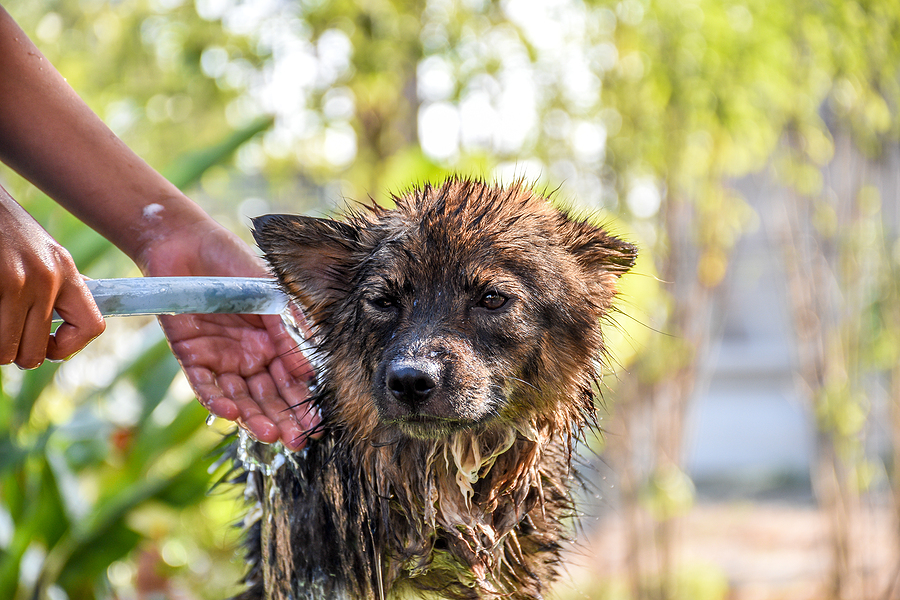
Protecting people and animals in the face of disaster includes decontamination, or the process of removing external contaminants, such as toxic chemicals.
In a newly developed set of protocols, the Texas A&M School of Veterinary Medicine & Biomedical Sciences’ (VMBS) Veterinary Emergency Team (VET) aims to educate disaster management teams across the country about the kinds and quantities of resources needed to clean external contaminants, such as toxic chemicals, off companion animals. Further, the new guidelines also offer instructions for how to set up decontamination (decon) stations and clean animals effectively with special bathing techniques.
“Every kind of disaster, whether it’s a tornado or an explosion at an industrial facility, has its own challenges,” says Debra L. Zoran, DVM, PhD, DACVIM, a professor in the VMBS’ Department of Small Animal Clinical Sciences and the VET’s interim director. “But one thing that most have in common is exposing people and animals to harmful substances that can cause health problems.”
Dr. Zoran adds while exposure to natural disasters, such as a flood that can spread sewage water, can just lead to skin irritants, people and animals could also be exposed to something worse, such as cancer-causing agents.
“The goal of this project was to provide community emergency planners with numbers that would help them quantify things like how much soap to buy, how much water to allocate, and how many volunteers it takes to decontaminate dogs,” Zoran says in the university’s release. “We hope this will encourage more communities to include animal decontamination in their disaster planning.”
The VET aimed at creating streamlined processed that will make animal decontamination affordable and efficient, using materials that are readily available. An example of this is a washing station made out of large plastic tubs with holes drilled in the bottom to allow water to drain out.
“We purposefully chose tubs that are easy to find at places like feed and hardware stores so that any community can replicate our process,” Zoran says. “If you place the tubs in a large trough that’s connected to a bladder or drainage system, then the volunteers won’t be at risk from standing in contaminated water.”
Zoran and her team also simulated situations that need removing oil-based contaminants.
“There may be situations where using an antibacterial soap is important,” Zoran says. “However, they don’t tend to lather as well, so we wanted to test one and see if it could decon as well as the dish soap. We found that dish soap is still the better option for removing oily substances in most settings.”
In the future, Zoran and her research collaborators hope to get more precise information about decon for a greater variety of dogs, as well as other common pets, such as cats.
For more information, click here.
